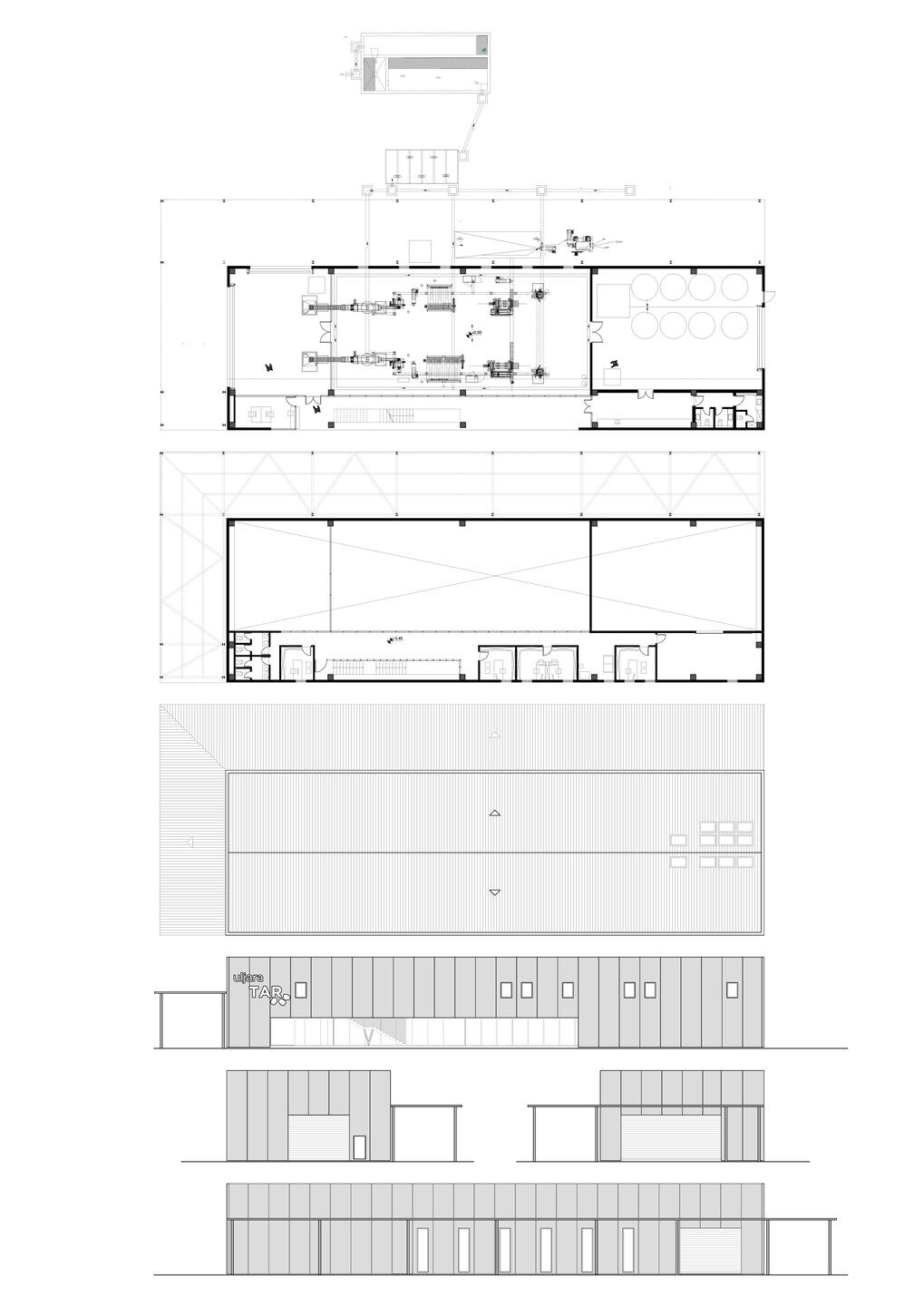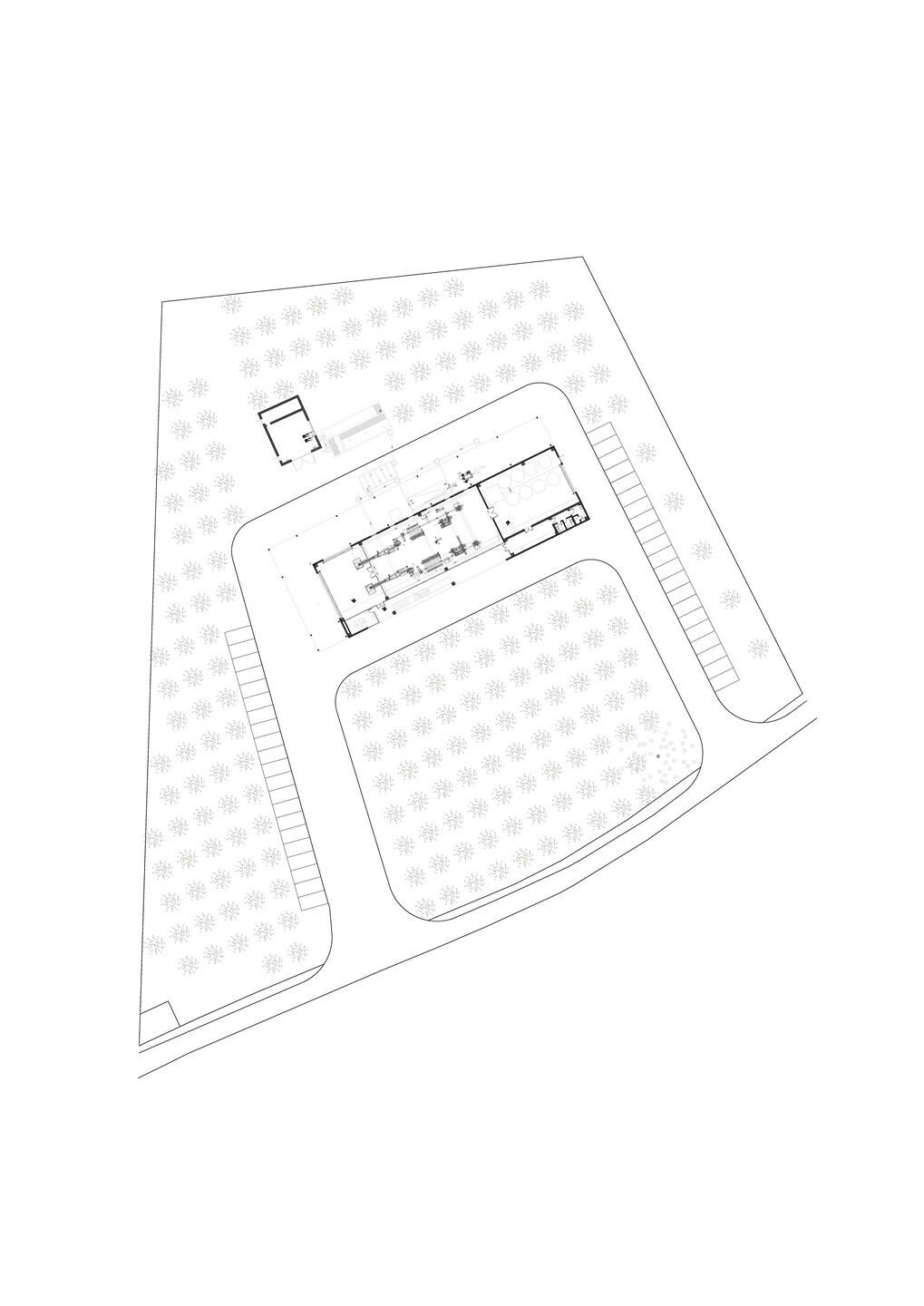The classic concrete cube with a surface area of 1,000 m2 is designed as a skeletal system of prefabricated elements, including columns, beams, facade panels, and roof panels.
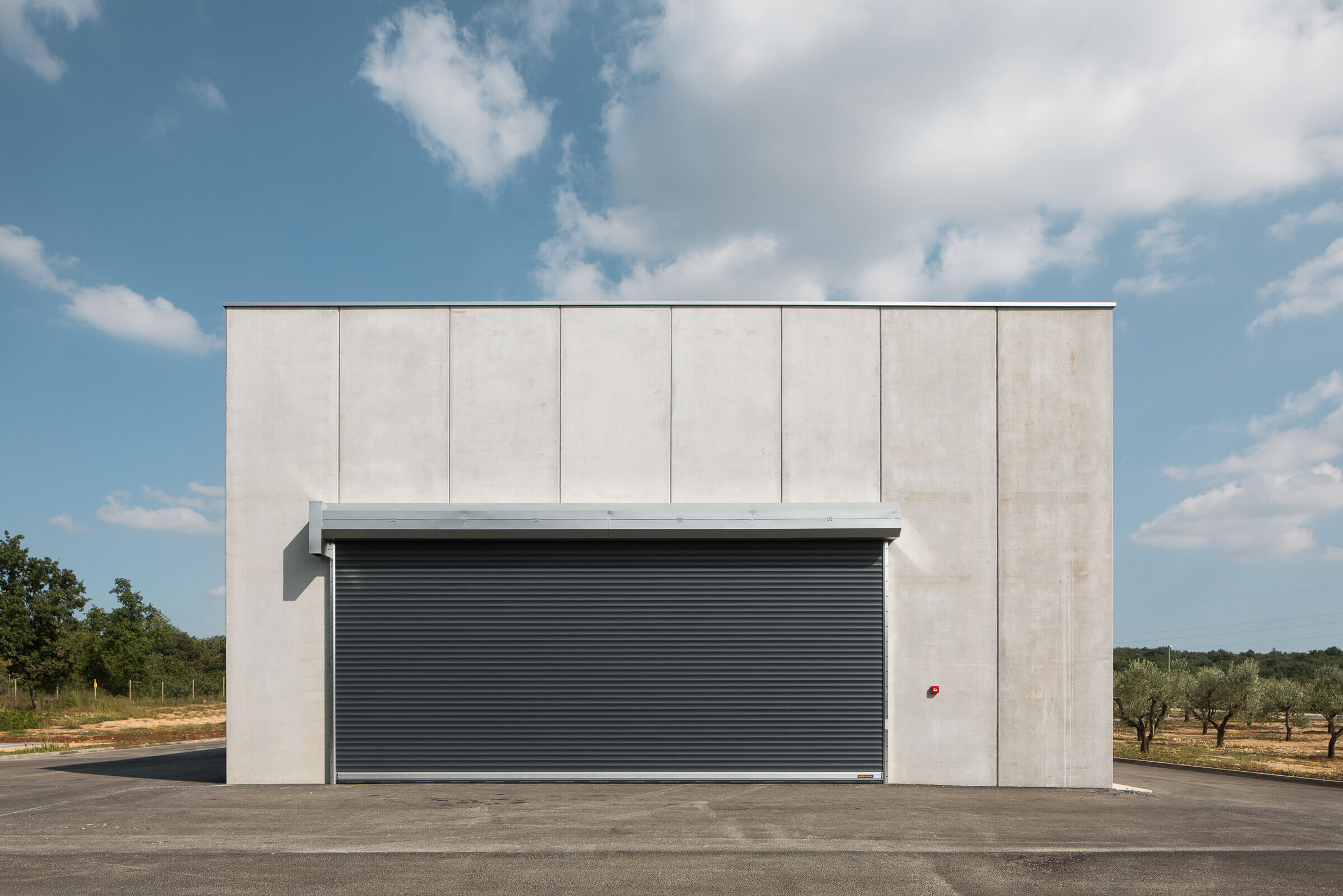
The building was constructed in 2020 on a 15,000 m2 plot surrounded by greenery and olive trees.

It all began when the former production line was transferred to Poreč in 2003. Local olive growers had to transport olives for processing to the city, about ten kilometers away. The logical desire of the client, a public investor, was to have an oil mill in their municipality again. The project's task was to design an oil mill with two production lines, each with a capacity of 1,500 kg/h, addressing the treatment of wastewater generated in the production process. Additionally, the design included storage for oil, presentation space, and offices.
Furthermore, the project envisioned the use of a pelletizer to produce pellets from the pits.
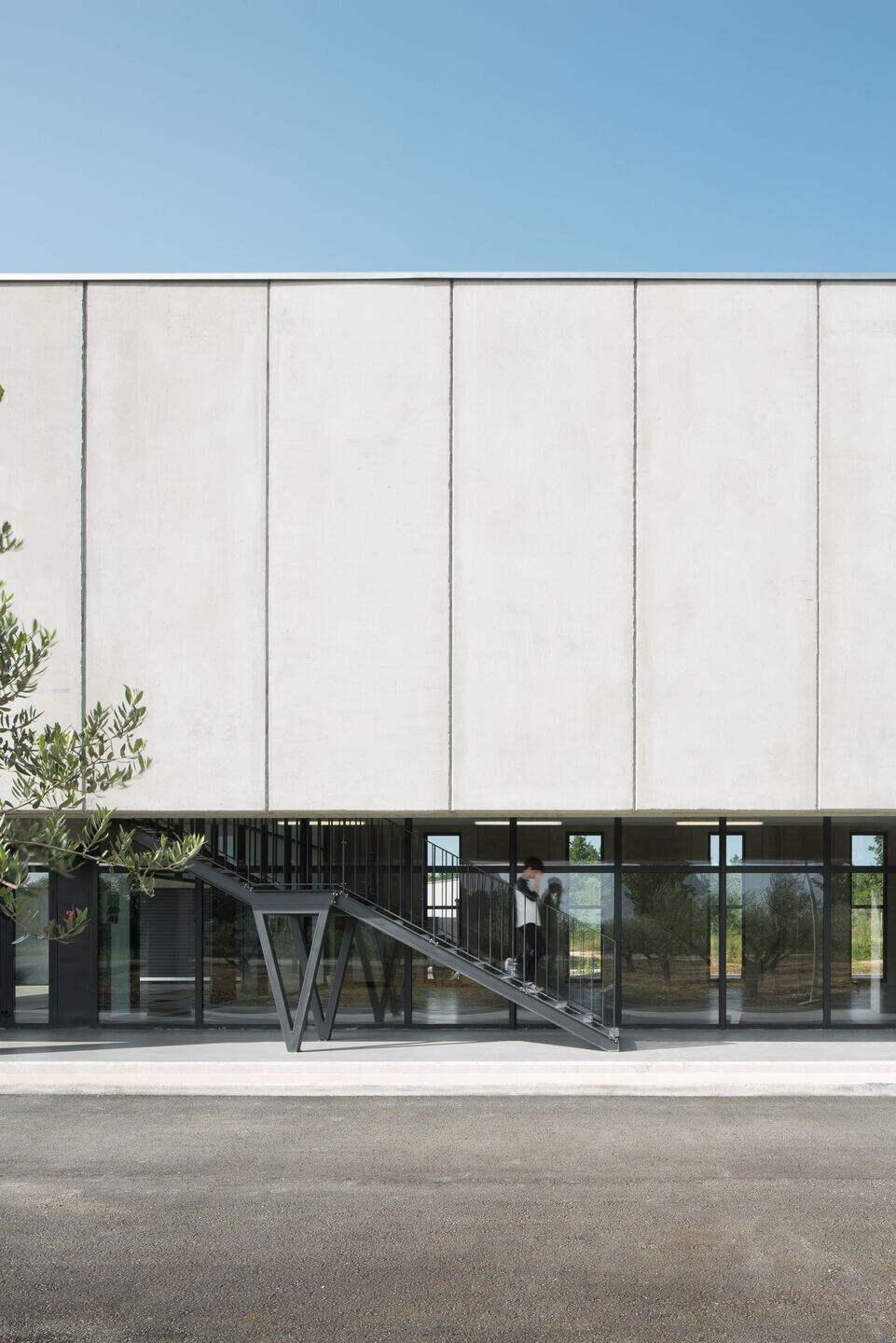
The economic justification for the investor to build a sufficiently large and equipped space was the favorable opportunity to source raw materials for production. Tar has several family-owned agricultural farms with over 50 hectares of olive orchards. The building is a classic concrete cube consisting of prefabricated concrete elements such as columns, beams, facade panels, and roof panels. It is constructed on the embankment of a former construction material landfill.
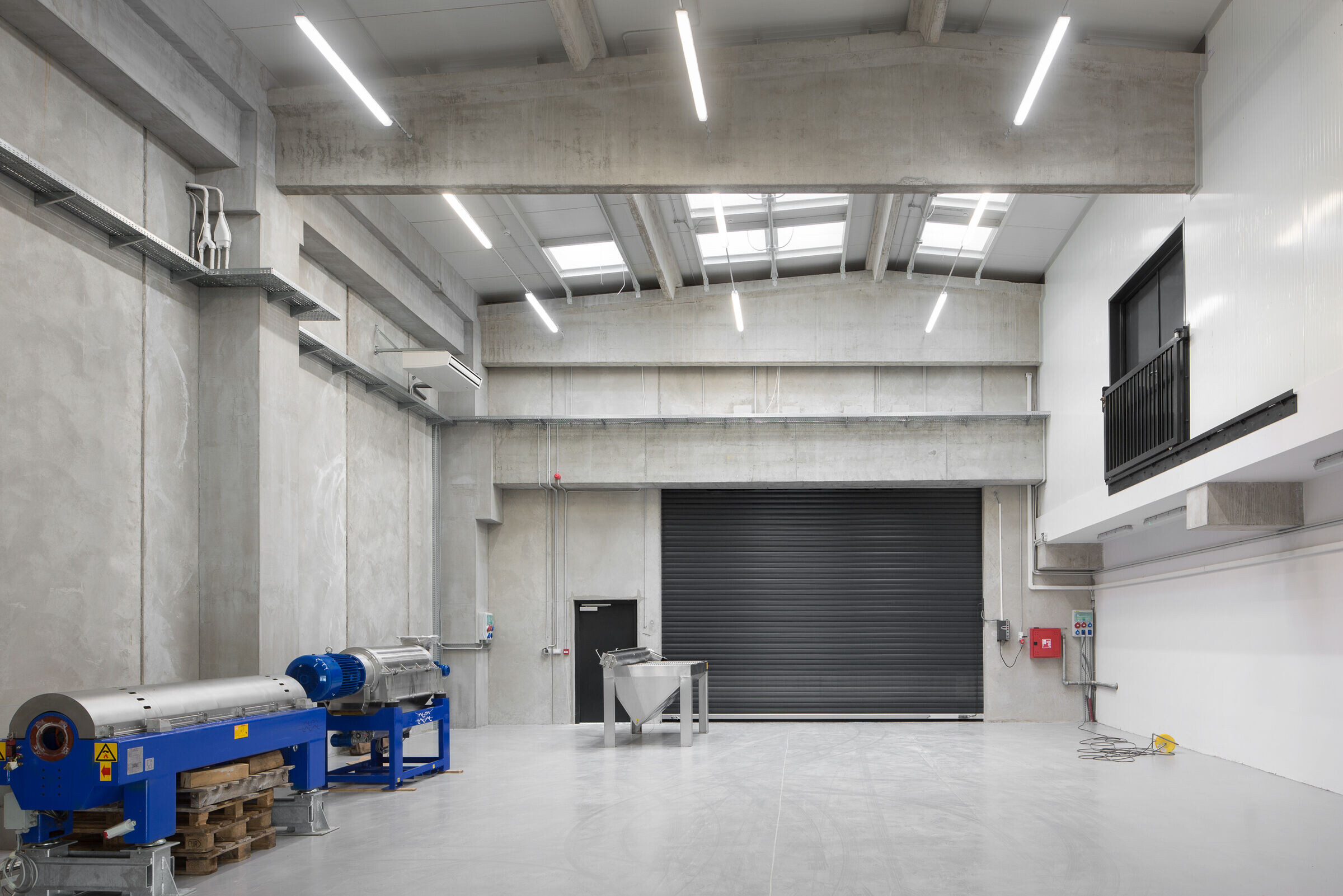
The cube is designed to open up to the surrounding context through perforations in the facade panels, allowing newly planted olive trees to be visible, whose fruits are processed in the oil mill.

The main idea for shaping the cube was to design a simple modular structure with emphasized elements such as stairs, perforations, and glass walls for the olive grower to observe the entire production process. The oil mill has two floors: ground floor and first floor. The ground floor includes a reception area for olives, production area, oil storage, covered terrace, space for packaging and oil sales, visitor toilets, and employee changing rooms.
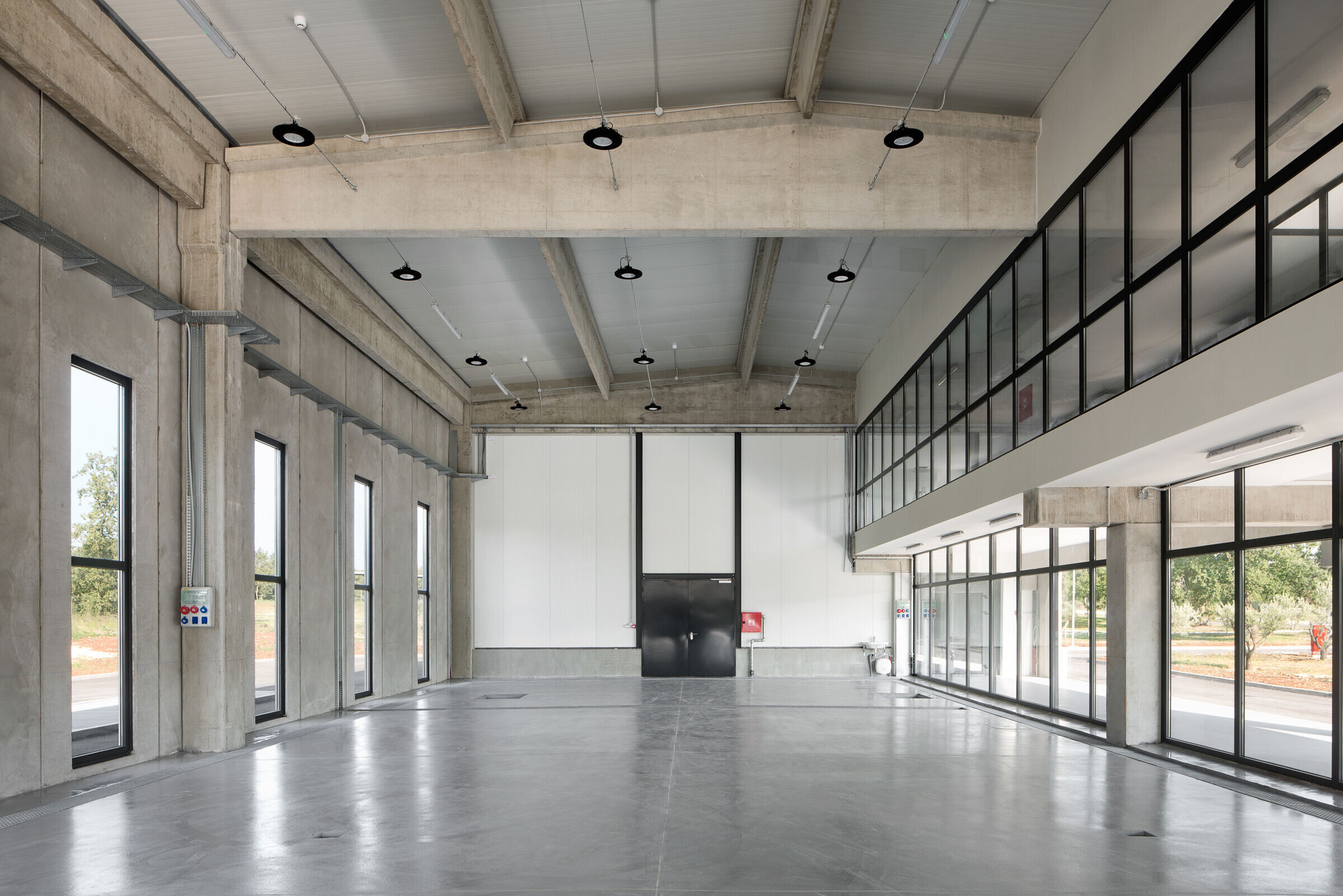
The first floor houses offices with bathrooms and a storage area, while a covered operational area is located along the west and north facades.
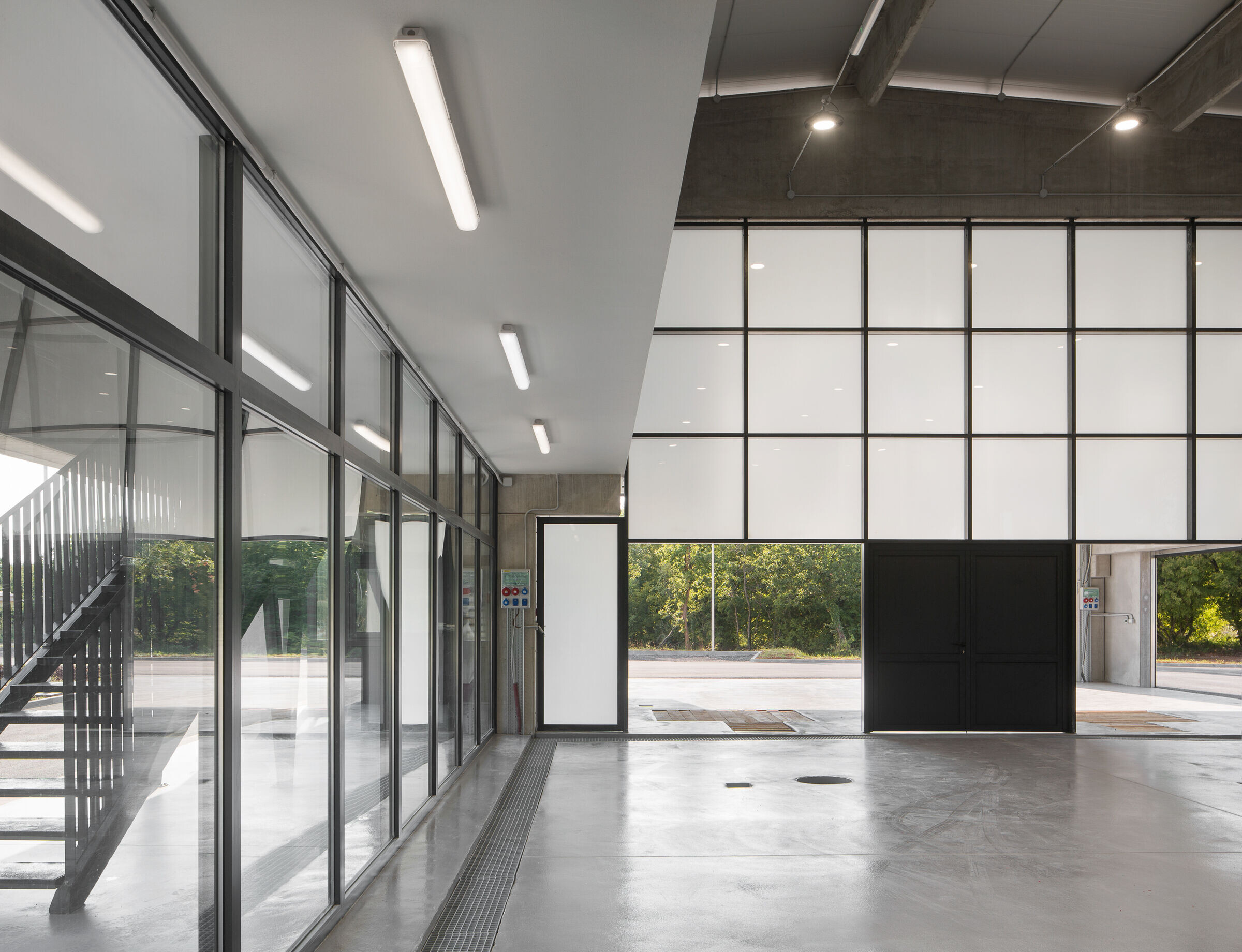
The maximum height of the building is 8.30 meters from the final leveled terrain to the top of the concrete facade panels. The maximum dimensions of the building's footprint are 48.90 m x 14.90 m, while with the canopy, they are 54.95 m x 20.95 m. Interior design and furnishing ideas focused on using easily sustainable coverings, functional design in line with production needs, and making the process visible to external observers, namely the olive grower.
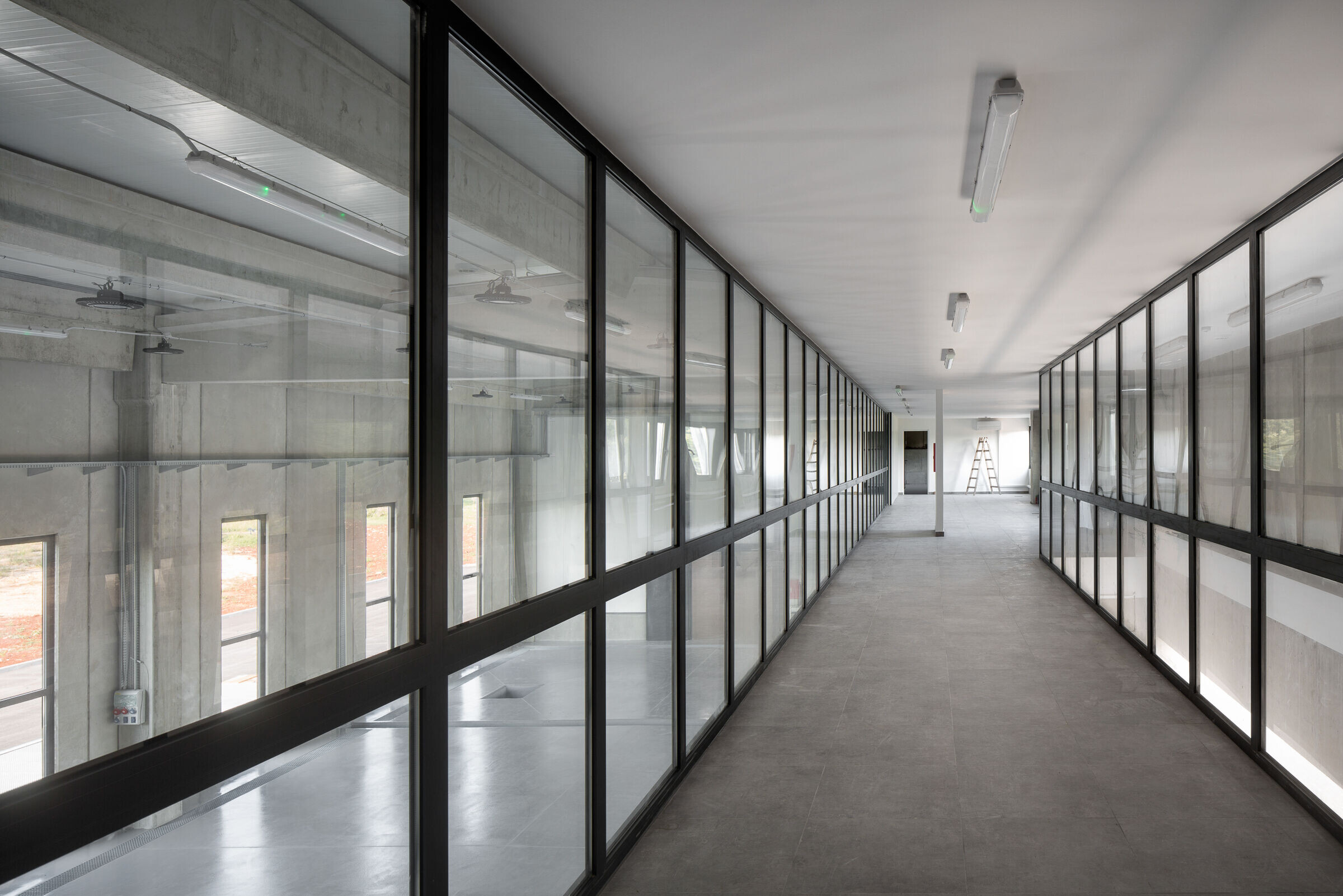
The building is designed as a skeletal system of prefabricated concrete elements to be assembled on-site. The roof structure is constructed as a pitched roof with a 10% slope, consisting of sandwich panels on the load-bearing structure.
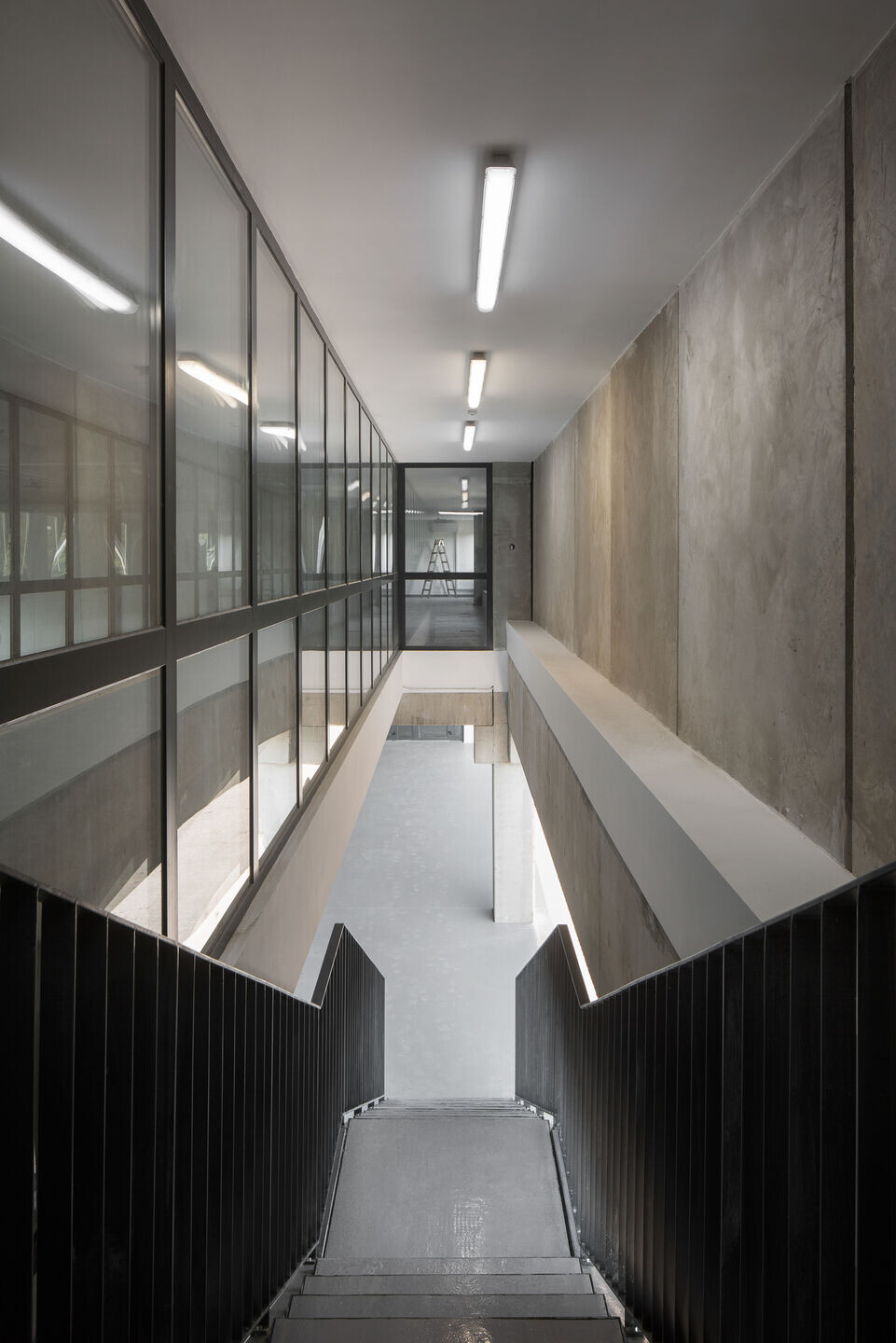
The building is founded on isolated footings. These footings are connected by tie beams resting on the footings. Inside the building, packaging and oil sales spaces, bathrooms, and changing rooms are constructed using 25 cm thick brick modular blocks. Other partition walls on the ground floor and first floor are assembled from prefabricated gypsum board panels. The floor slab is made of fiber-reinforced concrete, 20 cm thick, on a minimum 50 cm gravel cushion.
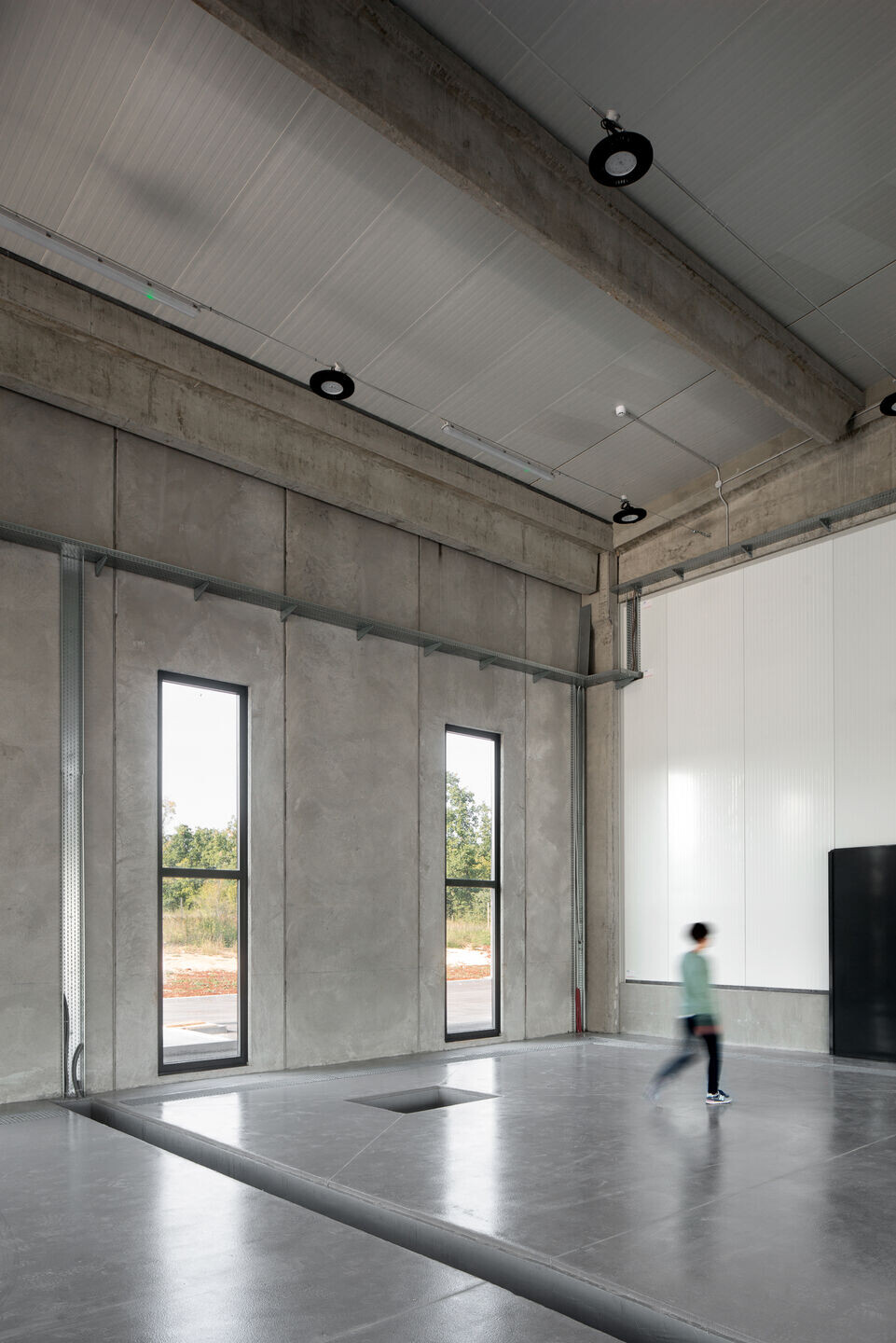
The inter-floor construction of the first floor is made using hollow concrete slabs with a sound insulation layer, a protective layer of cement screed, and tiles as the finishing layer.
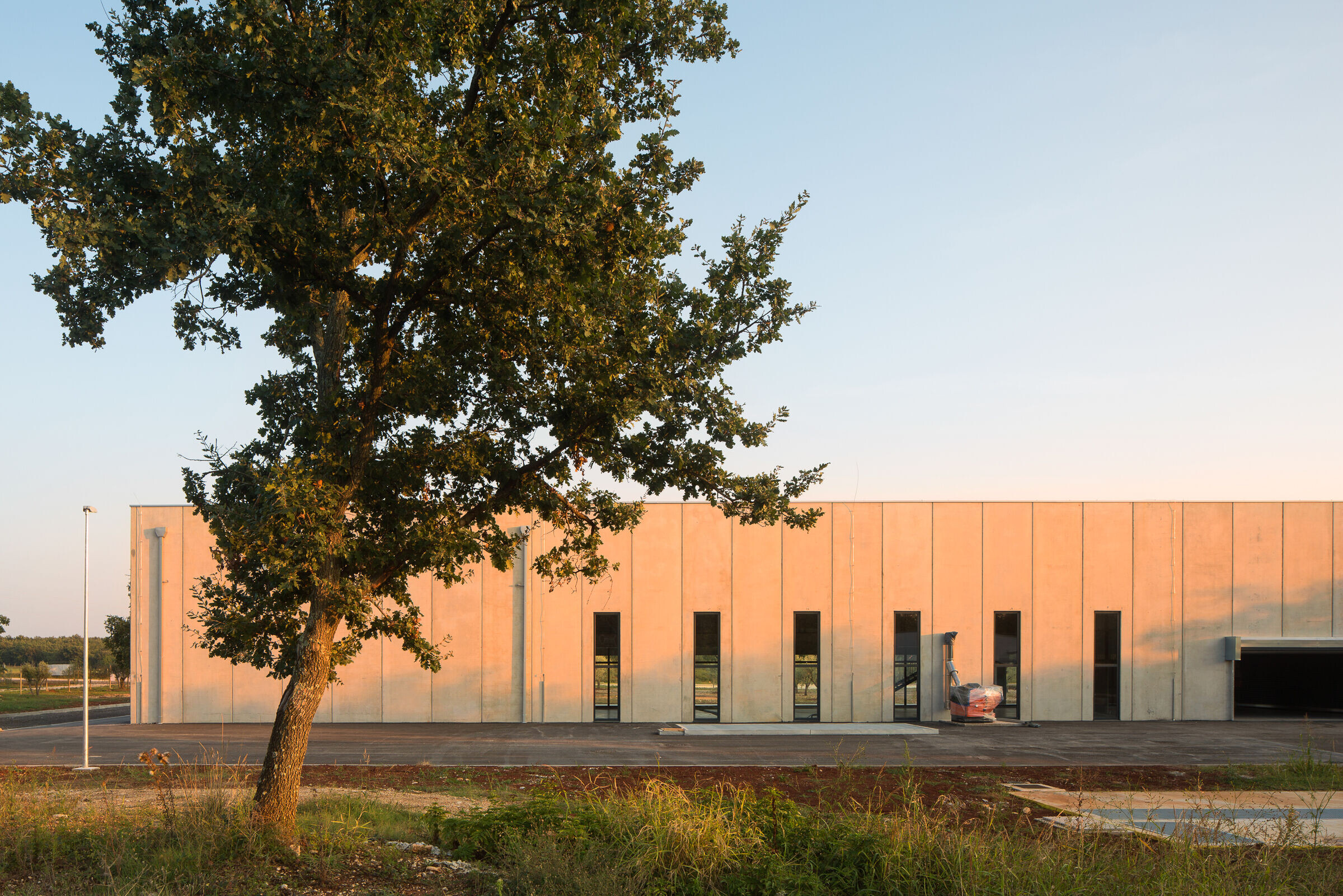
The external facade of the oil mill is made of 20 cm thick facade concrete panels with integrated 8 cm thermal insulation.
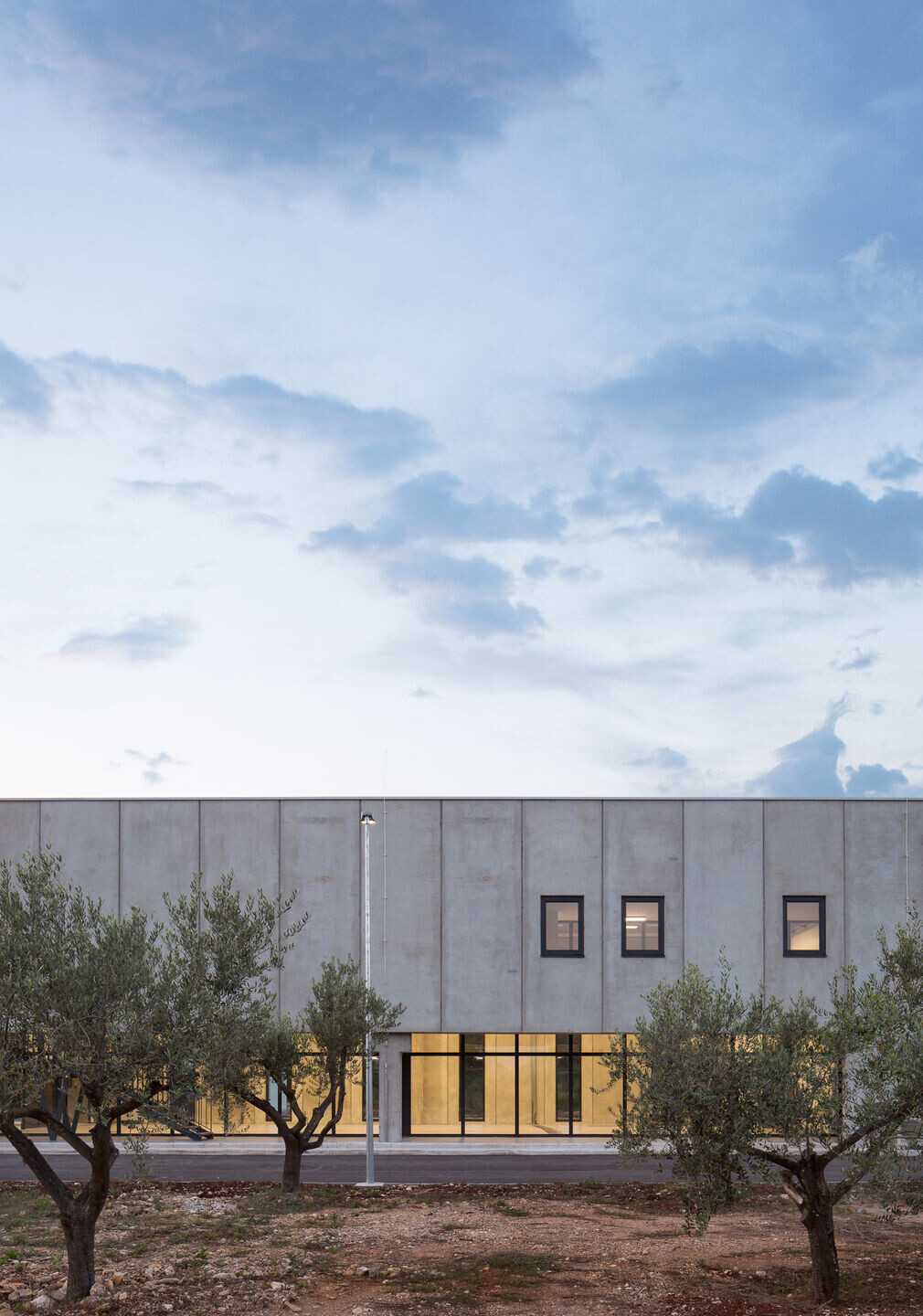
During the design and execution, the greatest challenge was to design and implement a correct production process without discharging wastewater into the environment.
